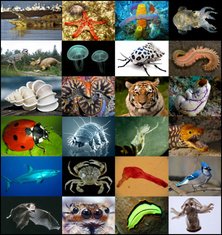Featured Quizzes
User Quizzes
Create Quiz
Data and Charts
Badges and Games
About JetPunk
JetPunk Shop
Dark Mode

Major Phylums in kingdom Animalia
See how many of the major phylum within the kingdom Animalia you know, (hint common names work for some of these).
Warning: some of these are a little obscure.
Rate:
Last updated: June 11, 2022
You have not attempted this quiz yet.
More quiz info >>
| First submitted | June 11, 2022 |
| Times taken | 16 |
| Average score | 33.3% | Report this quiz | Report |
7:00
Enter answer here
0
/ 30 guessed
Time Used
00:00
Best Time
00:00
The quiz is paused. You have remaining.
Scoring
You scored / = %
This beats or equals
% of test takers
also scored 100%
The average score is
Your high score is
Your fastest time is
Keep scrolling down for answers and more stats ...
|
|
Comments
No comments yet
New and Popular
Save Your Progress
Copyright H Brothers Inc, 2008–2024
Contact Us | Go To Top | View Mobile Site
